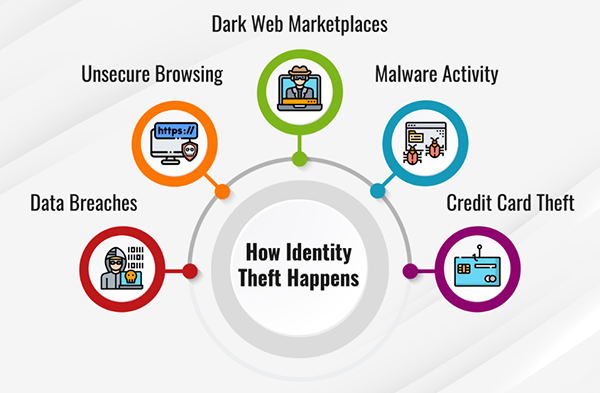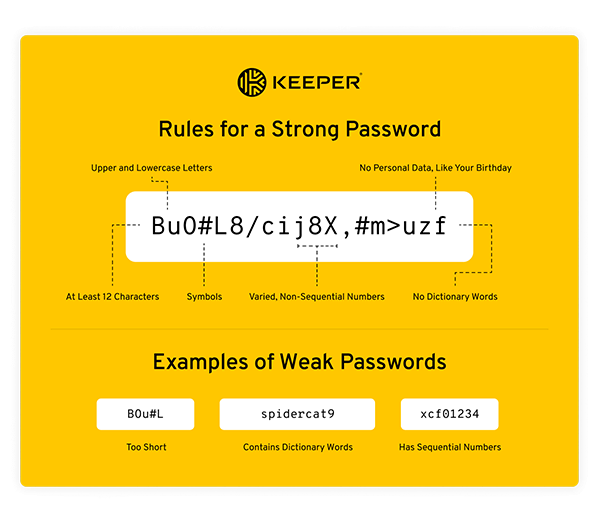The social media platform is indeed a helpful asset for all of us, but it can be turned into a nightmare as well in no time. Whereas, social media is good not only for networking on an individual level, but it also helps businesses to foster.
However, in this article, we are going to discuss some ways social media can turn into identity theft. Identity theft on social media is such a great concern that over 56% of identity theft cases are tied to social media.
Hence, to make a positive change and awareness in society, we are listing all the possible ways that lead to the issue, and will also guide you on how to fight back against them.
Social media identity theft is typically an event in which a cyber-criminal accesses an individual’s personal information from their social networking sites and then utilizes such information to impersonate them or commit fraud. This issue is no less than a menace. It is not only about financial loss; rather, reputations, relationships, and careers are at stake in the process.
Cyber-criminals use personal data such as your full name, birthday, address, or even your pictures. They may create fake profiles and send malicious messages or even scam people using your name and identity. This kind of theft is dangerous because people often share too much personal information on social media sites, which can help criminals make a fake and convincing profiles.

The identity theft scam is pretty well organized and is done step-by-step. The following are different ways how they lure people into their trap:
For some of you, social media identity theft might be a far-out possibility. However, the results of such issues are deep and can have long-lasting consequences. The effects are often wide-ranging or complex, affecting not only the financial status of the victim, but also their personal life, emotional set-up, and professional life.
One of the most direct and serious consequences of identity theft via social media is financial damage. Once access is achieved to important personal information, such as:
The cybercriminal will not hesitate to exploit this for financial purposes.
Social media profiles are also typically utilized to project personal, professional, or brand identity. Impersonation on such highly reachable media will result in more than an annoyance to you; that would damage your image in many ways.
Inflammatory, inappropriate, or malicious content could be posted by an imposter under your name, creating a false impression that you endorse these statements. Most of the people who steal people’s identities on social media use their own networks to send fake messages or links to trick others.
The emotional toll of such an incident is often overlooked, yet it can be one of the most damaging or traumatizing aspects of the crime. It can result in violent psychological stress: the feeling of being violated and at the mercy of events. Knowing someone out there has accessed your data, pictures, or even private messages, allows a strong feeling of fear to set in.
You may be in constant fear of further intrusions or other attempts at harming you and/or your loved ones. Where one’s identity has been stolen, even familiar online interactions cannot be trusted, and this promotes hypervigilance and, overall, a reduction in social engagement.

Now that you know how severe identity theft can become, it is now time to learn how to protect yourself from such incidents. Not only yourself, but you can follow the given tips to help others stay protected as well:
Control the privacy settings to decide who can filter your information. In most of the platforms, the user has the option to customize the option so that only friends or followers can see the posts as well as the information of the individual and even the pictures.
Depending on your target demographic, as a general rule, make your email address, phone number, and date of birth private. Do not broadcast your location in real time, especially when you are on a holiday or out of town.
The ability to use the same password on multiple websites and platforms can expose you to an online attack.
When setting up a password, make sure to use a password manager to create strong and unique passwords. There are characteristics that a strong password must have. It is recommended that your password contain:
Do not use information that can be easily predicted, such as dates of birth or names.
Two-factor authentication adds an extra layer of protection. The process is pretty simple, as it simply requires a second form of identification beyond your password, usually an OTP or email confirmation.
So, even if hackers hacked your password, they have to know this confirmation to actually log in.
Phishing scams come in the form of suspicious messages or emails that require urgent attention. Never click on links from untruthful sources or give away personal details if the request is free of charge.
Here’s a tip: Always check the sender’s e-mail or message prior to taking immediate action.
Use an online privacy service to protect your identity online and make sure that your social media accounts, and email addresses associated with those accounts, have not been compromised. Be on the lookout for login attempts from unknown locations, changes to your account information, or unauthorized posts.
Knowing how social engineering works can prepare you for when someone tries to take advantage of you. Be suspicious of friend requests, messages, or other interactions where sensitive information is asked for.
Take early action in case you realize that your identity has been stolen or that your social media account has been compromised. Major platforms have means through which identity theft and pretending to be someone else can be reported. They can lock down your account or remove fake profiles to prevent further damage.
Change the passwords as soon as possible. Do it with all of your affected accounts, and any other account that uses a similar password. If you have not enabled 2FA previously, do so now to secure your account going forward.
Let your friends and followers know your account has been compromised so no one gets conned through scams in your name.
According to legal documentation and resolution, “filing a police report and making a complaint can be very important if the identity theft has caused financial loss or other serious consequences.”
If someone has accessed your personal information, carefully monitor your financial accounts. This might entail calling your bank and credit card companies to have them monitor your account for unusual/ suspicious activity.
As social media continues to grow and evolve, so will the methods cybercriminals use to exploit these platforms. These days, companies are investing in modern and technical AI to detect fraud, and governments are imposing stricter laws for data protection.
However, the key to minimizing the risk lies with individual action: basically being aware of the threats and staying proactive with your online behavior. This means you have to educate yourself on staying safe in the first place.
By taking the necessary steps to safeguard your digital presence, you can minimize your risk of falling for such trap to social media identity theft. The more secure and prepared you are, the more difficult it will be for these attackers to steal your identity.
As the platforms work on their enhancements to make their security systems better, you as a user also have a responsibility in ensuring that your information is secure. Staying current with news, updating security and privacy controls, and maintaining good security hygiene will assist in protecting against this new threat and allow for the proper utilization of social media without worry.
